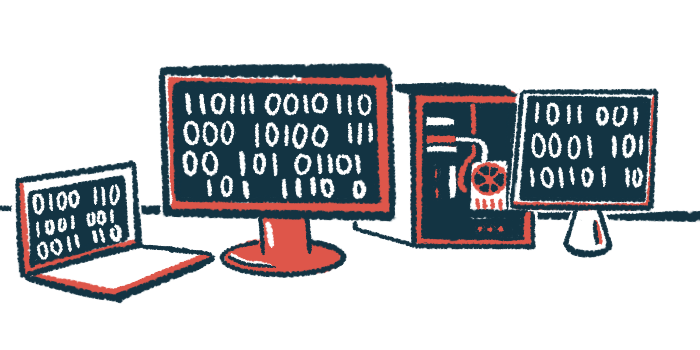AI tool helps spot lung scarring to aid PF diagnosis, monitoring
Brainomix says e-Lung could speed diagnosis, identify risk of future PPF
Written by |

Software that uses artificial intelligence to analyze medical imaging tests may help facilitate earlier diagnosis and more accurate monitoring of pulmonary fibrosis in people with underlying lung diseases.
Brainomix‘s e-Lung could allow doctors to detect progressive pulmonary fibrosis (PPF), where lung tissue becomes increasingly scarred and leads to irreversible lung damage, according to data the company presented at the CHEST annual meeting, held Oct. 19-22 in Chicago.
“The data we have shown for e-Lung is very promising, and the ability to objectively assess [lung tissue] changes to predict disease trajectory and treatment responses could really help us personalize treatment decisions and improve outcomes for patients living with pulmonary fibrosis,” Teja Kulkarni, MD, a professor at the University of Alabama at Birmingham, said in a press release from Brainomix.
Interstitial lung diseases, or ILDs, are a group of disorders marked by inflammation in the lungs. Some people with ILD will develop PPF, putting them at increased risk of early mortality.
When treating PPF, initiating care as early as possible is considered key to facilitating optimal outcomes. But even for experts, it can be hard to identify PPF patients who are eligible for available treatments.
Analyzing CT scans with AI could ‘transform’ care
The e-Lung software uses advanced computational tools to analyze CT scans of the lungs. It was developed by using large quantities of data to train computer algorithms to identify disease-related signatures. Brainomix last year teamed up with Boehringer Ingelheim to make the software widely available in the U.S.
“AI-powered CT analysis has the potential to transform pulmonary fibrosis care,” Kulkarni said. “It can enhance early detection, precisely quantify disease, and track progression over time.”
The new study used data from U.S. centers to conduct a retrospective analysis, using e-Lung to analyze CT scans to see if the software could have identified PPF in patients before they were actually diagnosed. According to Brainomix, results showed the software could have supported an earlier diagnosis of PPF in 62% of patients. Data showed that diagnosis could be made up to 21 months earlier.
“Early diagnosis of progressive pulmonary fibrosis is a key goal which is associated with improved patient outcomes,” said Peter George, PhD, Brainomix’s senior medical director. “The evidence building around e-Lung points to a new tool that enables physicians and radiologists to more accurately identify subtle, but clinically meaningful disease progression on CT scans.”
Data also indicated that the e-Lung software could identify signs of disease progression (worsening lung damage) in more than three-quarters of patients who were thought to be clinically stable. This progression was “clinically significant and was associated with survival,” according to Brainomix. The company said the data emphasize the importance of early detection in PPF care.
Additional analyses suggested that the software could identify patients at high risk of developing PPF in the future based on a single initial CT scan of the lungs.
“Maximizing the data we can extract from routinely performed CT scans has the potential to identify progressive pulmonary fibrosis months and even years earlier than is currently possible,” George said. “I look forward to seeing this scientific advancement translated into tangible benefits for patients ultimately improving their quality of life and long-term outcomes.”







